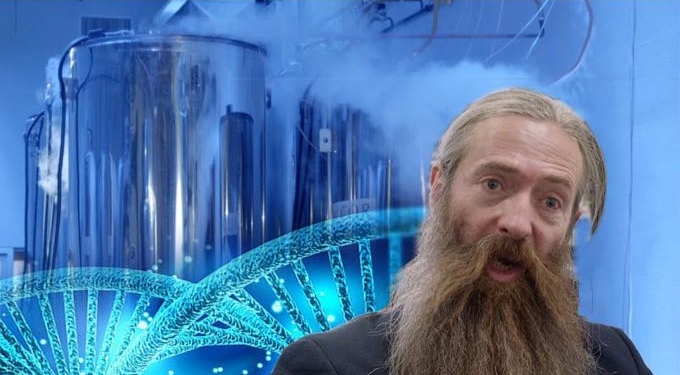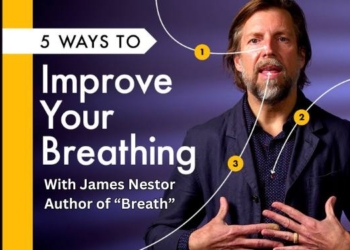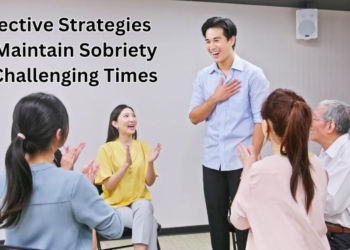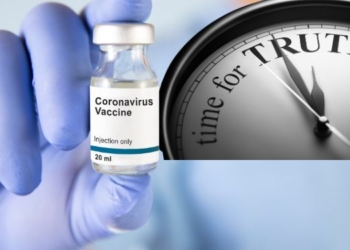Video Source: vpro documentary
Story at-a-glance
- Statistically, the younger you are right now, the greater your chances of living to 100 and beyond, thanks to improvements in 3D printing, stem cell research and nanotech technology
- About one-quarter of children born today are expected to live beyond 100, and research shows the number of centenarians in the U.S. has been doubling every decade since the 1950s
- Some choose to avoid the finality of death by having their remains placed in a cryogenic deep freeze to await reanimation at some future date
- Once reanimation is possible, technology will also need to be advanced enough to rejuvenate the body. Cloning would also need to be perfected to allow for the reattachment of your frozen head onto your cloned body
- Other research focuses on damage repair, turning back the biological clock before death occurs. Gene therapy that promotes telomere lengthening is one possible avenue to slow down or even reverse aging
By Dr. Joseph Mercola | mercola.com
If you want to live to celebrate your 100th birthday, you’re not alone. Some are going to great lengths to achieve extreme life extension — if not immortality itself. Statistically, the younger you are right now, the greater your chances of living to 100 and beyond, thanks to improvements in 3D printing, stem cell research and nanotech technology.
At present, about one-quarter of children born today are expected to live beyond 100,1 and research shows the number of centenarians in the U.S. has been doubling every decade since the 1950s. By 2050, the number of centenarians living in the U.S. is expected to pass 1 million.2
The fascination with extreme longevity is an enduring one and the search for “the fountain of youth” has a long history, from tracking down sacred, life-giving water sources in the days of antiquity to the invention of nanobots and stem cell research in the modern age.
The Search for Immortality
The featured VPRO Backlight documentary, “Becoming Immortal,” documents some of the latest advancements in the fight against aging. “If aging is considered as a disease, then the cure is immortality,” the narrator says. For some, the dream of eternal life is so strong, they freeze their bodies — or just their heads — in cryogenic tanks, where they await the day when the technology to revive them has come to pass.
According to this film, billions of dollars are spent biohacking the human biology in search of longer life, and Google has created an entire department dedicated to investigating the human biology of aging and mortality. “The techies are convinced the human code can be cracked,” the narrator says, “if not during their own lifetime, then shortly thereafter.”
The ultimate goal: The ability to extend life indefinitely, allowing you to live as long as you wish. As noted in the film, while some find life unbearable and seek to end it sooner rather than later, others truly love life and want to keep going far beyond what is currently considered a normal life span.
Entering the Deep Freeze
In the desert of Arizona is a company called Alcor, founded in 1972. Here, those who refuse to accept the finality of death can have their remains placed in a cryogenic deep freeze to await reanimation at some future date. Freezing your head costs $80,000; placing your entire body on ice will set you back a cool $200,000. Some are also choosing to cryopreserve their pets, in the hopes of reuniting with them in the future. Freezing a small pet’s head costs about $5,000.
For proper preservation, the patient is immediately frozen following death. Cryogenic freezing involves preserving the dead body in liquid nitrogen. After the blood has been replaced by an antifreeze fluid to protect tissue integrity, the body is placed in an arctic sleeping bag and cooled to about 166 degrees below zero Fahrenheit (110 degrees below zero Celcius). Over the following weeks, the temperature is progressively lowered until it reaches about 321 degrees below zero F (196 below zero degrees C).
According to Alcor cofounder Linda Chamberlain — who currently has three of her own family members, including her husband, stored at the facility — the idea is not to be brought back to life as an old and feeble person. The idea is that once reanimation is possible, the technology will also be advanced enough to actually rejuvenate the body, essentially winding back the biological clock to a much more youthful stage. Cloning would also need to be perfected to allow for the reattachment of your frozen head onto your cloned body.
‘Somewhere Between Life and Death’
According to Alcor, once frozen, the individual is “located somewhere between life and death.” “It’s kind of like if you were in a hospital, and the person was in a coma,” Chamberlain says when asked how she feels about her family members being in this in-between state.
“You know their body is still alive, and that there’s hope that medical technology will be able to fix what they died of and bring them back to a healthy state of functioning. And so, for me it’s very much like that. I feel very joyful and happy when I’m back here [in the cryopreservation room]. In addition to my family members, I have dozens of good friends [here] that I’ve known over the years. This is a very inviting place for me. I like being here.
Am I afraid of death? You bet I am. Death sounds boring. It’s the end of everything. Death there’s no way back from. With cryonics, we’re talking about stopping death so that we have a chance of living vastly extended lifespans. Real death means all the information that was once in your body … is gone, irretrievably. Maybe fear is the wrong word … maybe [a better word is] detesting the idea of going out of existence.”
While most of those awaiting new life at Alcor have expressed the desire to be brought back into a healthy human body, Chamberlain has more exotic wishes for her future life. She aspires to be brought back into a technologically sophisticated frame composed of nanobots, which would give her the ability to alter her physiological functioning at will. She gives the example of being able to go skiing on Mars without concern for the lack of atmosphere.
The SENS Research Foundation
Silicon Valley is home to the SENS Research Foundation, where scientists such as Aubrey de Grey, a biomedical gerontologist and a leading authority on life extension, aim to stimulate rejuvenation research on a global scale. Rather than hoping for reanimation after death, SENS is focused on damage repair, essentially turning back the biological clock before death occurs.
“We’re interested in restoring the body of an older individual, in terms of its structure and composition, to something like it was in early adulthood,” de Grey says. “If we can do that reasonably well, then we will by definition restore function, both mental and physical.
But that’s very different from how people have historically thought about how to address aging, either by directly attacking the symptoms of old age … or alternatively trying to clean up the way the body works so that it just ages more slowly in the first place.”
Gene Therapy
Silicon Valley’s growing obsession with radical life extension seems a logical outgrowth of geniuses creating life-altering technologies that affect millions if not billions of people. It’s a hubris of sorts, that makes them think they can crack the human code and bend mortality to their own will. However, as noted in the film, techies are not necessarily very good at understanding the complexities of human biology, or predicting the risks inherent with “biohacking.” Still, some accept the risks and use themselves as guinea pigs.
Liz Parrish, founder and CEO of BioViva, a biotech company specializing in antiaging therapies, was her company’s first patient. “If you don’t look young, you’re not young,” she says. Parish used gene therapy to lengthen her telomeres. According to BioViva scientists, her biological age reversed considerably. At present, these kinds of gene therapies are illegal for human use in most Western countries. Parrish received her treatments in Colombia.
How Telomere Length Affects Aging
Telomeres were first discovered back in the 1930s. Every cell in your body contains a nucleus, and inside the nucleus are the chromosomes that contain your genes. The chromosome is made up of two “arms,” and each arm contains a single molecule DNA, which is essentially a string of beads made up of units called bases.
A typical DNA molecule is about 100 million bases long. It's curled up like a slinky, extending from one end of the chromosome to the other. At the very tip of each arm of the chromosome is where you'll find the telomere. In 1973, Alexey Olovnikov discovered that telomeres shorten with time because they fail to replicate completely each time the cell divides. Hence, as you get older, your telomeres get increasingly shorter.
If you were to unravel the tip of the chromosome, a telomere is about 15,000 bases long at the moment of conception in the womb. Immediately after conception your cells begin to divide, and your telomeres shorten each time the cell divides. Once your telomeres have been reduced to about 5,000 bases, you essentially die of old age. This is now thought to be a major key that explains the process of aging itself, and holds the promise of not just slowing aging, but actually reversing it.
Exercise Slows Down Telomere Shortening
In 1984, Elizabeth Blackburn Ph.D., professor of biochemistry and biophysics at the University of California, San Francisco, discovered that the enzyme telomerase has the ability to lengthen the telomere by synthesizing DNA from an RNA primer. She, along with Carol Greider and Jack Szostak were jointly awarded the Noble Prize in Physiology or Medicine in 2009 for the discovery of how chromosomes are protected by telomeres and the enzyme telomerase.
The following year, research3 showed that exercise buffers the effect of chronic stress on telomere length, which helps explain some of its well-documented effects on health and longevity. Other studies have found there's a direct association between reduced telomere shortening in your later years and high-intensity-type exercises. As noted in a study published in Mechanisms of Aging and Development:4
“The results of the present study provide evidence that leukocyte telomere length (LTL) is related to regular vigorous aerobic exercise and maximal aerobic exercise capacity with aging in healthy humans. LTL is not influenced by aerobic exercise status among young subjects, presumably because telomere length is intact (i.e., already normal) in sedentary healthy young adults.
However, as LTL shortens with aging it appears that maintenance of aerobic fitness, produced by chronic strenuous exercise and reflected by higher VO2max, acts to preserve LTL … Our results indicate that LTL is preserved in healthy older adults who perform vigorous aerobic exercise and is positively related to maximal aerobic exercise capacity. This may represent a novel molecular mechanism underlying the “anti-aging” effects of maintaining high aerobic fitness.”
Millionaire DIY Life Extender Turns Back Biological Clock
Another do-it-yourself experimenter and SENS Foundation supporter is real estate millionaire Darren Moore, who uses FOX04-DRI, a senolytic agent, in an effort to turn back time. As explained on his website:5
“A senolytic … is among the class of senotherapeutics, and refers to small molecules that can selectively induce death of senescent cells. Senescence is a potent tumor suppressive mechanism. It however drives both degenerative and hyperplastic pathologies, most likely by promoting chronic inflammation.
Senescent cells accumulate in aging bodies and accelerate the aging process. Eliminating senescent cells increases the amount of time that mice are free of disease. The goal of those working to develop senolytic agents is to delay, prevent, alleviate or reverse age-related diseases.”
In mice, FOX04-DRI has been shown to turn back the biological clock. The substance, which is hard to come by, costs about $500 per milligram, so it’s by no means an inexpensive experiment. There are also no guarantees it will work in humans. Moore, however, believes some risk is worth the possibility of gaining a longer life, and more importantly, longer health-span.
But he’s made his share of mistakes. One experimental drug caused severe side effects, making him break out in a swollen, itchy rash and caused rapid heartbeat and dangerously high blood pressure.
Optimism and Zest for Life Is a Powerful Longevity Predictor
Life extension, especially when we’re talking about extreme life extension — possibly to the point of making us more or less immortal — brings up a lot of questions. What makes us human? What is personal identity? Is there a soul, and if so, what are the spiritual ramifications of reanimating your corpse? Who should have access to life extending technologies? There are many more, and as advances are made, we’ll eventually need to face all of these questions.
As of right now, death is still a certainty for all of us. You can, however, slow down the aging process, and you don’t need to be wealthy or reckless to do it. According to longevity researchers, the majority of centenarians — people who are 100 or older — do not feel their chronological age; on average, they report feeling 20 years younger. They also tend to have positive attitudes, optimism and a zest for life. Indeed, having a positive outlook on life has been shown to be THE most influential factor in longevity studies!
Interestingly, healthy behaviors cannot fully account for impact optimism has on mortality. Some researchers believe optimism has a direct effect on biological systems. Indeed, while conventional medicine is still reluctant to admit that your emotional state has a major impact on your overall health and longevity, a 2013 article in Scientific American6 discusses a number of interesting advancements in the emerging field of psychoneuroimmunology.
Researchers have found that your brain and immune system are actually wired together. Connections between your nervous system and immune-related organs such as your thymus and bone marrow allow for crosstalk between the two systems. Your immune cells also have receptors for neurotransmitters, which suggests they can be more or less directly influenced by them.
What Centenarians Recommend
In interviews and surveys with centenarians, the following themes come up time and time again when asked to explain why they’ve lived so long.7 This list contains things most of us have quite a bit of control over. The same cannot be said for predicting the emergence of reanimation technologies and rejuvenation drugs.
| Keeping a positive attitude | Eating real food |
| Managing stress | Clean living (not smoking or drinking excessively) |
| Living independently | Strong family ties |
| Exercising (most report basic activities like walking, biking, gardening, swimming) | A network of friends |
| Staying mentally active and always learning something new | Faith/spirituality |














![Everything You Ever Wanted to Know About 9/11 Conspiracy Theory in Under 5 Minutes [VIDEO] | by James Corbett](https://consciouslifenews.com/wp-content/uploads/2018/09/911-a-conspiracy-theory-120x86.jpg)
